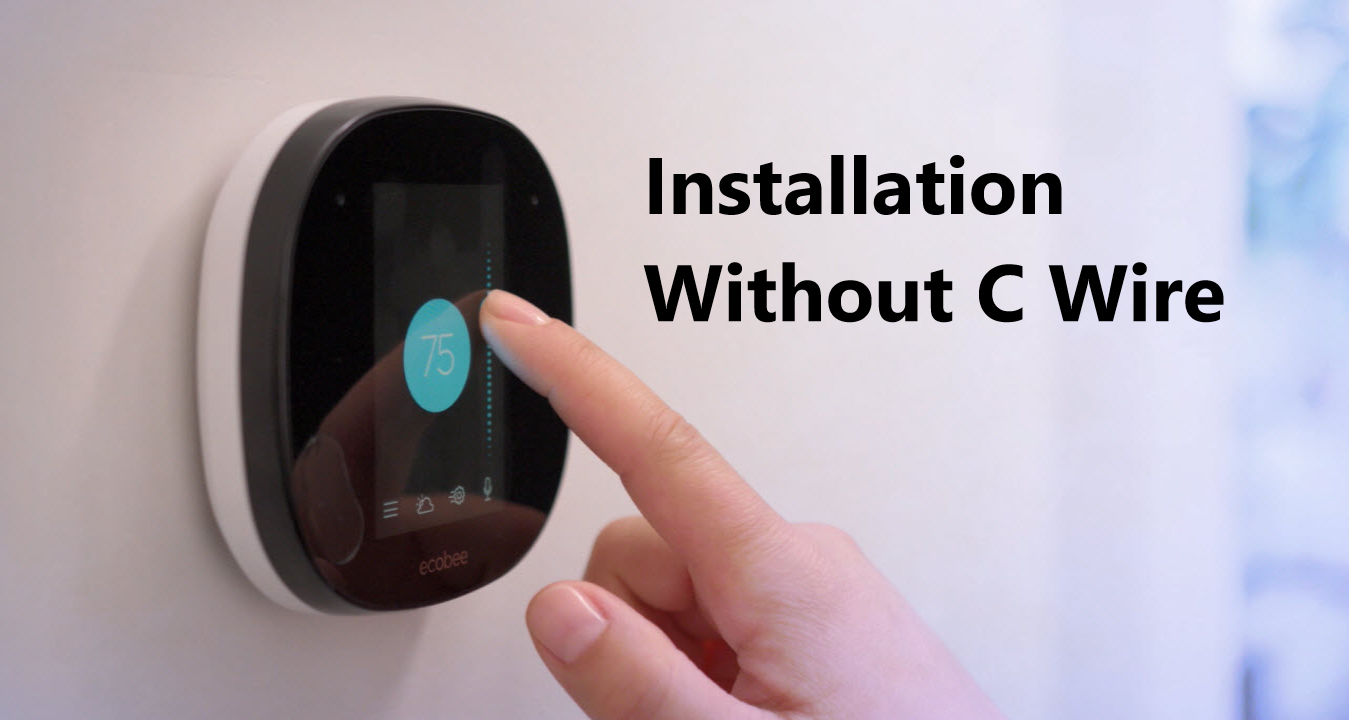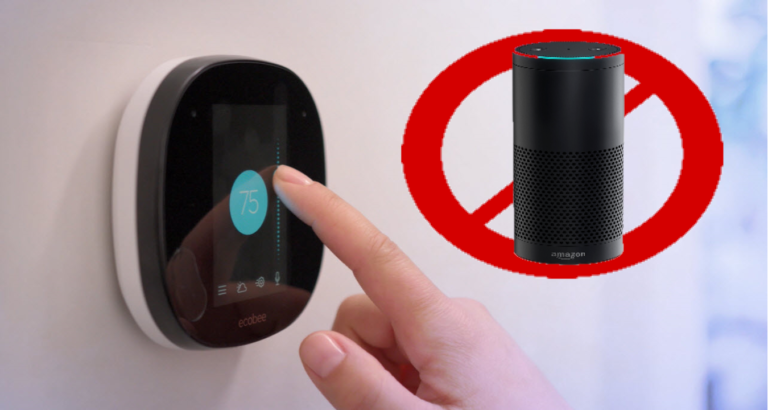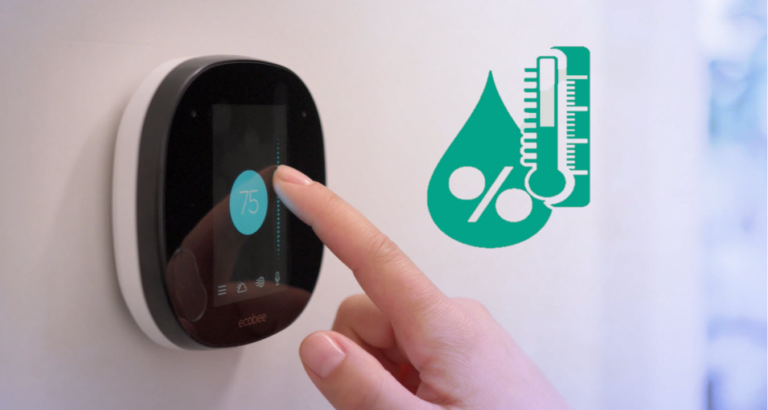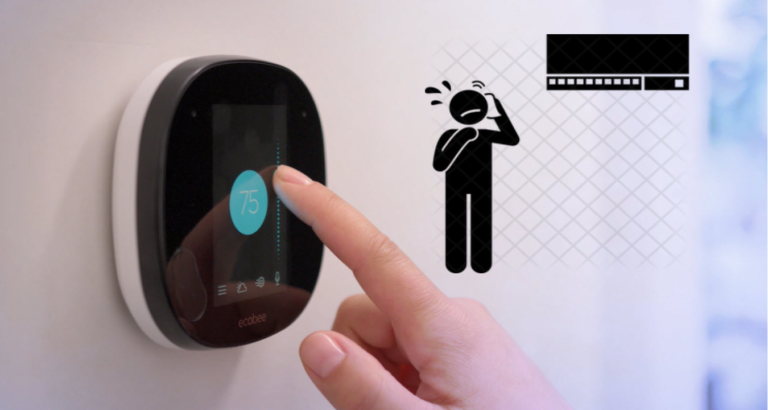Ecobee Installation Without C Wire: Smart Thermostat, Ecobee4, Ecobee3
Installing a smart thermostat like Ecobee can significantly enhance the comfort and energy efficiency of your home.
However, many homeowners face a common challenge when it comes to installation: the absence of a C-wire (common wire) in their HVAC system.
The C-wire provides continuous power to the thermostat, ensuring smooth operation. Fortunately, Ecobee offers solutions for installation without a C-wire.
In this blog post, we will provide a comprehensive guide for installing Ecobee4 and Ecobee3 thermostats without a C-wire, ensuring a seamless setup process.
Understanding the C Wire and Its Importance
The C-wire, also known as the common wire, is a low-voltage wire that provides a constant 24-volt power supply to the thermostat.

It is essential for smart thermostats as they require a continuous power source to function properly.
However, not all HVAC systems have a C-wire connection, which can make installation challenging. Ecobee has addressed this issue by providing alternative methods for powering their thermostats.
Installing Ecobee4 without a C Wire
1. Power Extender Kit:
Ecobee4 comes with a Power Extender Kit, which eliminates the need for a C-wire.
This kit uses the existing wiring connections to provide power to the thermostat. Follow the instructions provided with the Power Extender Kit to connect it correctly.
2. Ecobee App:
Download the Ecobee app on your smartphone and follow the on-screen instructions to create an account and set up your thermostat.
The app will guide you through the installation process, including connecting the wires and configuring the thermostat settings.
3. Wiring Configuration:
Ecobee4 requires a minimum of three wires (R, G, and Y) for basic functionality.

Connect the corresponding wires from your HVAC system to the labeled terminals on the Ecobee4 thermostat.
The Power Extender Kit will enable the Ecobee4 to operate without a C-wire.
4. Wi-Fi Connection:
Connect your Ecobee4 thermostat to your home Wi-Fi network by following the prompts on the thermostat’s display or the Ecobee app.
This will enable remote control and access to additional features through the app.
Installing Ecobee3 without a C Wire
1. Power Extender Kit:
Ecobee3 also provides a Power Extender Kit for installation without a C-wire. The kit allows you to use the existing wiring connections to power the thermostat.
Follow the instructions provided with the kit to connect it correctly.
2. Wiring Configuration:
Ecobee3 requires a minimum of four wires (R, G, Y, and W) for basic functionality.

Connect the corresponding wires from your HVAC system to the labeled terminals on the Ecobee3 thermostat.
The Power Extender Kit will ensure the thermostat operates without a C-wire.
3. Ecobee App:
Download the Ecobee app on your smartphone, create an account, and follow the instructions to set up your Ecobee3 thermostat.
The app will guide you through the installation process, including connecting the wires and configuring the thermostat settings.
4. Wi-Fi Connection:
Connect your Ecobee3 thermostat to your home Wi-Fi network using the Ecobee app or the thermostat’s display.
This enables remote control and access to additional features through the app.
Tips for a Successful Installation
1. Verify HVAC System Compatibility:
Before purchasing an Ecobee thermostat, check the compatibility of your HVAC system.
Ecobee provides a compatibility checker on their website or in their app, which can help determine if your system is compatible and if any additional accessories or adapters are needed.
2. Label Existing Wires:
Before disconnecting any wires from your old thermostat, label them according to their corresponding terminals.
This will make it easier to connect them correctly to the Ecobee thermostat.
3. Power Off the HVAC System:
Before starting the installation process, turn off the power to your HVAC system at the breaker box.
This ensures your safety and prevents any potential electrical mishaps during the installation.
4. Take Pictures:
Take clear pictures of the existing wiring configuration before removing the old thermostat.
These pictures can serve as a reference in case you encounter any difficulties during the installation.
5. Ensure a Secure Connection:
When connecting the wires to the Ecobee thermostat, ensure they are securely inserted into the corresponding terminals.
Loose connections can cause intermittent issues or malfunctioning of the thermostat.
6. Follow the Installation Guide:
Consult the installation guide provided by Ecobee for detailed instructions specific to your thermostat model.
The guide will walk you through the step-by-step process and provide any additional information required for a successful installation.
7. Test the System:
After completing the installation, restore power to your HVAC system at the breaker box and test the thermostat’s functionality.
Ensure that it powers on, connects to Wi-Fi, and controls your heating and cooling system properly.
8. Set up the Ecobee App:
Download the Ecobee app on your smartphone and follow the instructions to set up the app and connect it to your Ecobee thermostat.
The app allows for remote control, scheduling, and access to advanced features.
9. Utilize Customer Support:
If you encounter any difficulties during the installation process, don’t hesitate to reach out to Ecobee’s customer support.
They can provide guidance, troubleshoot issues, and address any questions or concerns you may have.
10. Regularly Update Firmware:
Once your Ecobee thermostat is installed and operational, it’s essential to keep the firmware up to date.
Regular firmware updates provide bug fixes, new features, and improvements to the thermostat’s performance.
By following these tips and closely adhering to the installation instructions, you can successfully install an Ecobee thermostat without a C-wire and enjoy the benefits of a smart and energy-efficient HVAC control system in your home.






